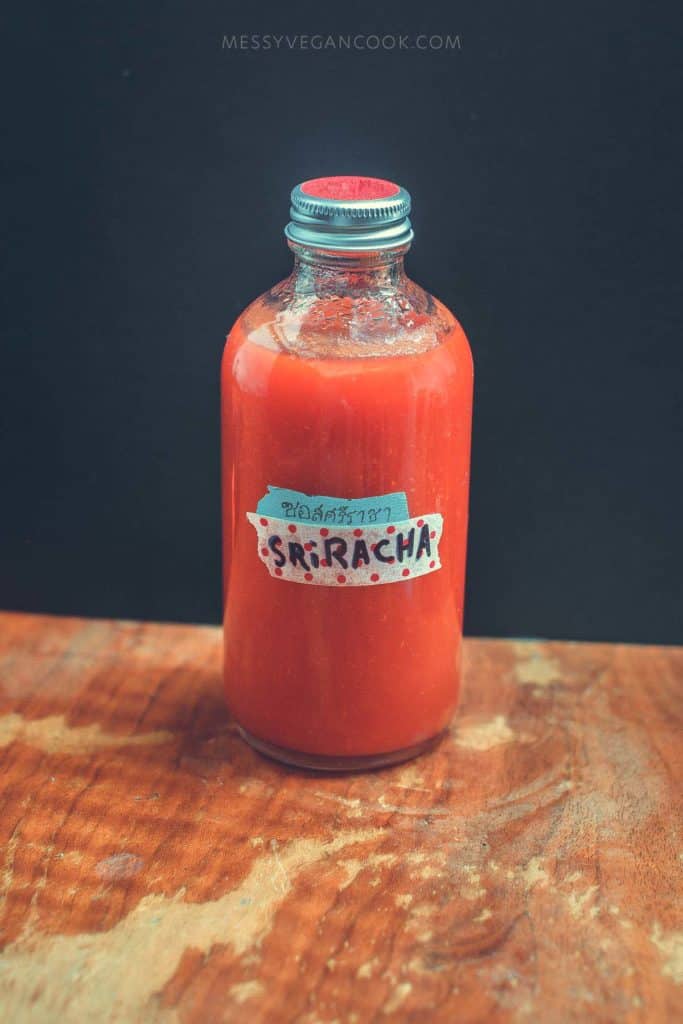Today most Americans and Europeans seem to measure sriracha using Huy Fung brand as their benchmark. Made and sold by a Vietnamese-American genius named David Tran, this green-topped hot sauce has earned its place alongside the likes of ketchup as a condiment mainstay. Stylistically, however, it differs from Thai sriracha.
The sriracha recipe at the end of this post is Thai, so if you’re looking to replicate the Huy Fung sauce my recipe won’t get you there. Thai sri racha is sweeter, less garlicky, more balanced in acidity, and thinner in consistency. Both are excellent. If you don’t feel like making my recipe, you can buy a bottle of Thai sriracha in order to appreciate the differences.

Sriracha, pronounced see-raa-chaa in Thai, is the name of a seaside town in Chonburi province in Thailand. The most widely accepted narrative holds sriracha was originally produced by a woman from this town, named Thanom Chakkapak, as a sauce for seafood. There is no protected designation of origin quality scheme in place to protect the name, and so it has become genericised. Tran didn’t trademark the word in the US either. Consequently there are now many brands of sriracha on supermarket shelves.
Sriracha is one of a thousand and one condiments in Thailand, used primarily as a dipping sauce but with uses in cooking as well. A common pairing is with kai jeow, a deep fried omelette (that is veganised in Thailand using yuba, or fong tauhu in Thai). You'll find it in some noodle dishes, such as in Thai suki sauce, and alongside rich grilled and fried foods. In your own practice use this sriracha recipe for whatever the hell you want, although I advise you avoid putting it in your eyes as I somehow manage to regularly do.
📖 Recipe
Thai Sriracha Hot Sauce (sot prik sriracha – ซอสพริกศรีราชา)
Equipment
- Blender
- steamer
Ingredients
- 100 grams long red chillies
- 30 grams peeled garlic cloves
- 3 large coriander roots
- 150 millilitres white vinegar
- ¾ teaspoon salt
- 55-65 grams shaved jaggery (cane sugar) (5-6 tablespoons)
Instructions
- Steam the peppers, garlic, and coriander root for 15 minutes over medium-high heat.
- Blend with remaining ingredients in a high powered blender until smooth.
- Pour into a small saucepan and simmer over low heat, stirring from time to time, for 15 minutes. Allow to cool and then jar and refrigerate.